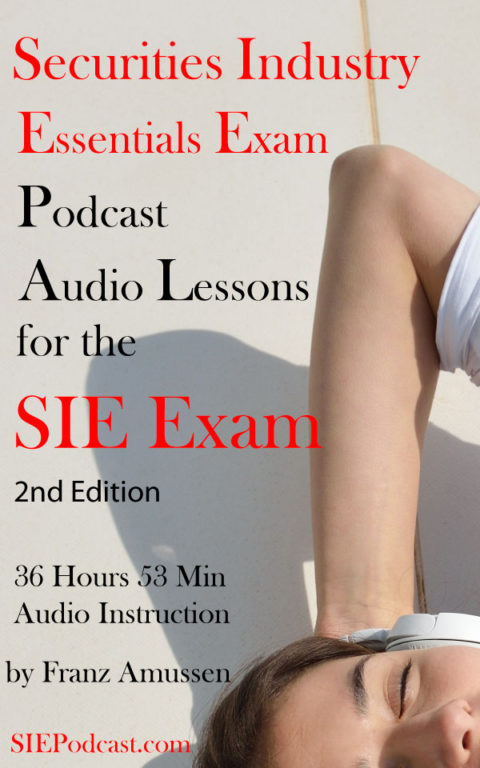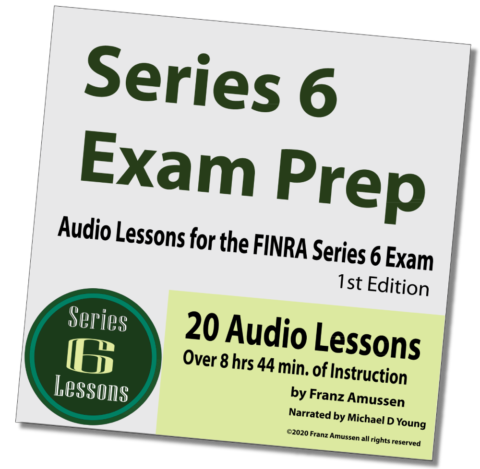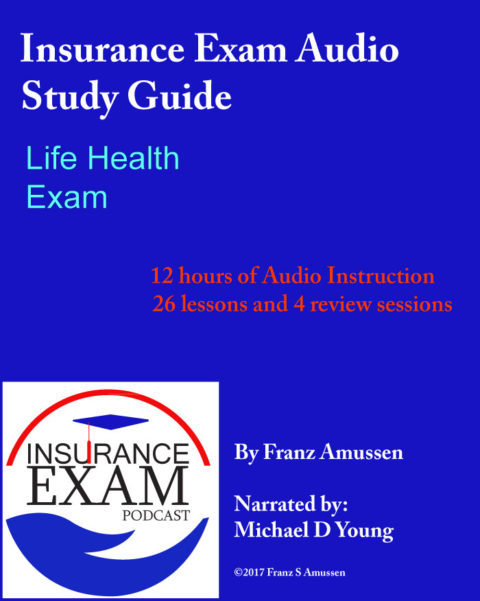Lesson 9 Types of Offerings:
Types of Offerings
There are three different types of offerings that an issuer might create: Initial public offering, subsequent primary offering, secondary offering.
Initial Public Offering = This is the first time that a company has sold its stock to the public. The issuer receives the proceeds from the sale minus the underwriter’s fees.
Subsequent Primary Offering = This happens after the corporation is already publicly owned, and the company needs to raise more money and so they are selling additional shares. The shares may either be sold for a fixed price or on the open market.
Secondary Offering = A group of shareholders sell their shares and receive the proceeds minus the compensation for the underwriter. It can also be combined with a primary offering to create a combined offering, where part of the proceeds go to the company and part of the proceeds go to the shareholders.
Competitive bid underwriting is when a company accepts bids from multiple underwriters while negotiated underwriting is when a company selects a single underwriter and hammers out a contract with them. An underwriting syndicate is a group of underwriters who work together to help a company, which is often necessary with large, wealthy companies. The person in charge of a syndicate is the lead/managing underwriter. These syndicates often get a green shoe provision, that allows them to purchase additional shares of the offering, equal to 15 percent of the offering.
Syndicates can form a selling group in order to help sell their securities. The other people in the selling group do not act as underwriters, but they simply sell securities for a fee.
Different members of the syndicate receive compensation based on the role that they play in the syndicate.
The underwriter’s fee is the cost of bringing securities to the market and it is charged for each share that the syndicate sells. If there is any remaining money after all syndicate expenses are paid, the syndicate members will split what remains.
The selling concession is a fee paid to any syndicate or selling group member that sells shares to investors. This is the only fee that selling group members are entitled to.
The management fee is given to the lead underwriter for every share that is sold. All these fees together make up the entire underwriting spread. Only the lead gets the entire spread.
If a stock is sold at $15 per share and the three fees amount to $3 per share, then the issuer will receive $12 per share.
Underwriting agreements have to be submitted to FINRA’s corporate finance department so that they can be reviewed. This as to happen no later than a day after filing of registration with a state agency or with the SEC. If it is a private placement, then it has to be filed with FINRA at least 15 business days before the anticipated offering date.
FINRA looks at the proposed compensation for the underwriters and determines whether it is fair and reasonable, given the offering. They look at the maximum amount the underwriters could receive if all the shares of the offering are sold.
FINRA does this to make sure that underwriters are not taking advantage of the issuers. They do not allow for certain kinds of expenses, such as a non-accountable expense allowance of greater than 3% of the underwriting spread, or a green shoe provision of more than 15%. If FINRA finds that the fees are excessive, they contact the lead underwriter, who is then compelled to change them. Only when FINRA is satisfied, can the offering proceed.
In addition, the syndicate can be offered additional things in ways of compensation, such as shares of issuer, reimbursement of additional costs, finder’s fees, and the right of first refusal on future offerings.
Some offering are exempt from this kind of oversight, including U.S. government/municipal securities, variable contracts, and private placements.
Securities by FINRA Members
Special rules apply when FINRA member firms want to offer securities. They are not allowed to underwrite their own securities. They have to get a highly-qualified underwriter, known as a qualified lead underwriter, who has been a lead underwriter for at least three offerings in the last three years, for at least 50% of the shares being sold.
The proceeds are placed in escrow until the offering is completed and their net capital computation is submitted for review to FINRA.
Some securities are exempt from being registered with the SEC, because of either the nature of the issuer of the nature of the security. They also do not have to provide a prospectus. No security is exempt from the antifraud provisions of the SEC.
The following kinds of securities are exempt:
Debt securities that mature in fewer than 270 days sold in denominations of $50,000 or more.
Employee benefit plans.
Option contracts, puts and calls.
The following kinds of issuers are exempt:
The United States government
State and local governments
Foreign national governments
Insurance companies
Banks and trusts
Credit unions/savings and loans
Religious or charitable/non-profit organizations
Private placements are those who are made to a group of accredited investors only and not to the general public. These accredited investors have to earn at least $200,000 per year, if single, $300,000 together with a spouse or have at least a net worth of $1,000,000 above the value of their primary residence.
An issuer is limited to selling to 35 non-accredited investors through private placements within a 12-month span. No commission is paid to those who sell a private placement to a non-accredited investor. Everyone who invested through a private placement, must hold the securities for at least six months and they have sign a document stating that they are buying these securities for investment purposes.
Stock that is purchased in this way is known as restricted stock (sometimes lettered or legend stock).
Sometimes people hire people to evaluate the suitability of a private placement they are considering. These people are known as purchaser representatives and have to appointed in writing. They are not allowed to receive a blanket appointment to represent them in all private placements, they cannot own more than 10% of the issuer’s stock, and than cannot have a conflict of interest, by being an officer/employee/affiliate of the issuer, unless he or she is a close relative of the person they are representing.
If the private placement is more than $5 million, it can only be offered to institutional investors, accredited investors and non accredited investors who have a purchaser representative.
If you are ready to get serious and want the full series of Series 22 Audio Lessons…
In order to take the Series 22 Exam you must also Pass the SIE Exam
We also have audio lessons for the following exams:
Podcast: Play in new window | Download








